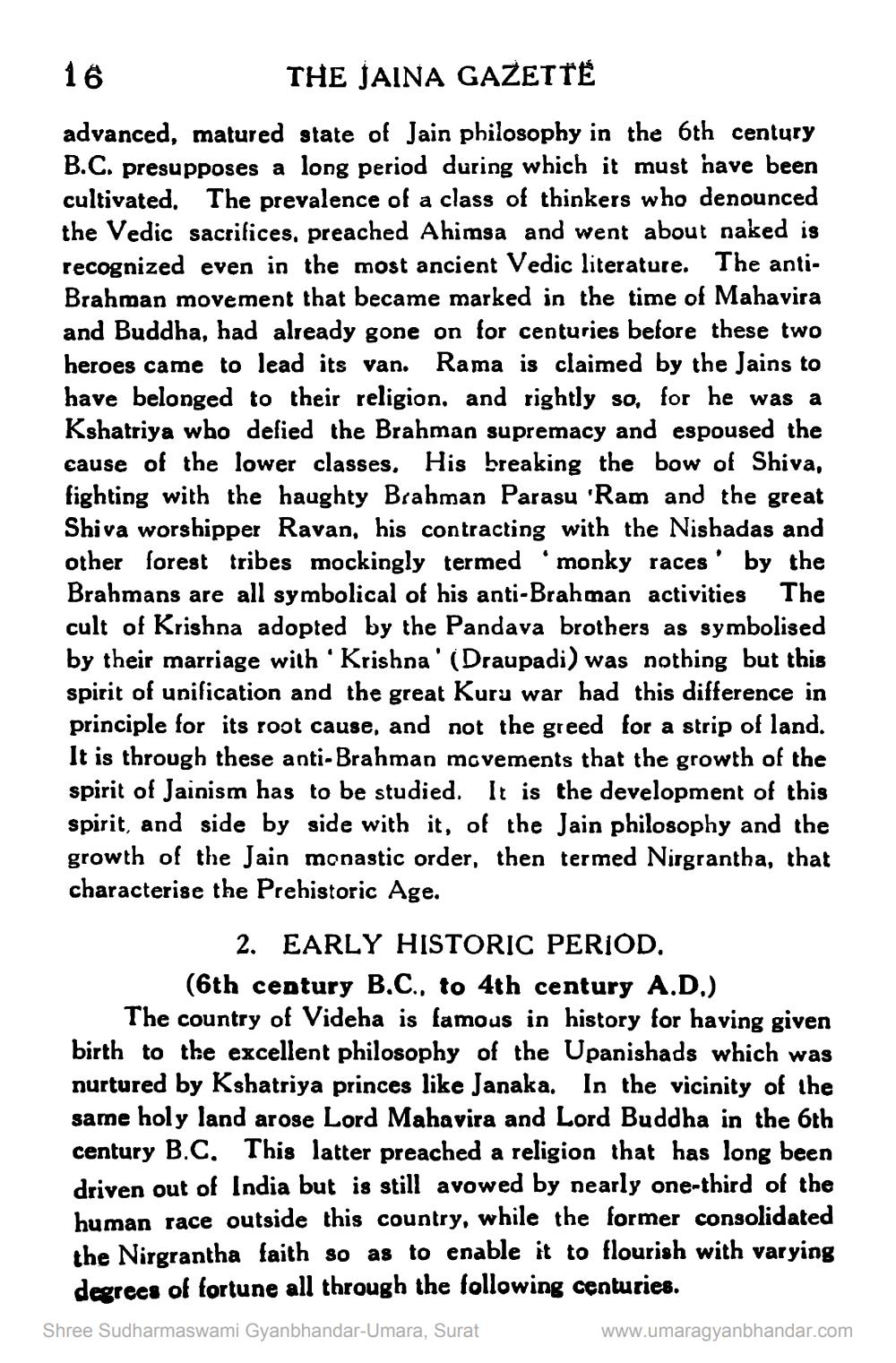________________
16
THE JAINA GAZETTE advanced, matured state of Jain philosophy in the 6th century B.C. presupposes a long period during which it must have been cultivated. The prevalence of a class of thinkers who denounced the Vedic sacrifices, preached Ahimsa and went about naked is recognized even in the most ancient Vedic literature. The antiBrahman movement that became marked in the time of Mahavira and Buddha, had already gone on for centuries before these two heroes came to lead its van. Rama is claimed by the Jains to have belonged to their religion, and rightly so, for he was a Kshatriya who defied the Brahman supremacy and espoused the cause of the lower classes. His breaking the bow of Shiva, fighting with the haughty Brahman Parasu 'Ram and the great Shiva worshipper Ravan, his contracting with the Nishadas and other forest tribes mockingly termed 'monky races' by the Brahmans are all symbolical of his anti-Brahman activities The cult of Krishna adopted by the Pandava brothers as symbolised by their marriage with Krishna' (Draupadi) was nothing but this spirit of unification and the great Kuru war had this difference in principle for its root cause, and not the greed for a strip of land. It is through these anti-Brahman movements that the growth of the spirit of Jainism has to be studied. It is the development of this spirit, and side by side with it, of the Jain philosophy and the growth of the Jain monastic order, then termed Nirgrantha, that characterise the Prehistoric Age.
2. EARLY HISTORIC PERIOD. (6th century B.C., to 4th century A.D.) The country of Videha is famous in history for having given birth to the excellent philosophy of the Upanishads which was nurtured by Kshatriya princes like Janaka. In the vicinity of the same holy land arose Lord Mahavira and Lord Buddha in the 6th century B.C. This latter preached a religion that has long been driven out of India but is still avowed by nearly one-third of the human race outside this country, while the former consolidated the Nirgrantha faith so as to enable it to flourish with varying
degrees of fortune all through the following centuries. Shree Sudharmaswami Gyanbhandar-Umara, Surat
www.umaragyanbhandar.com




